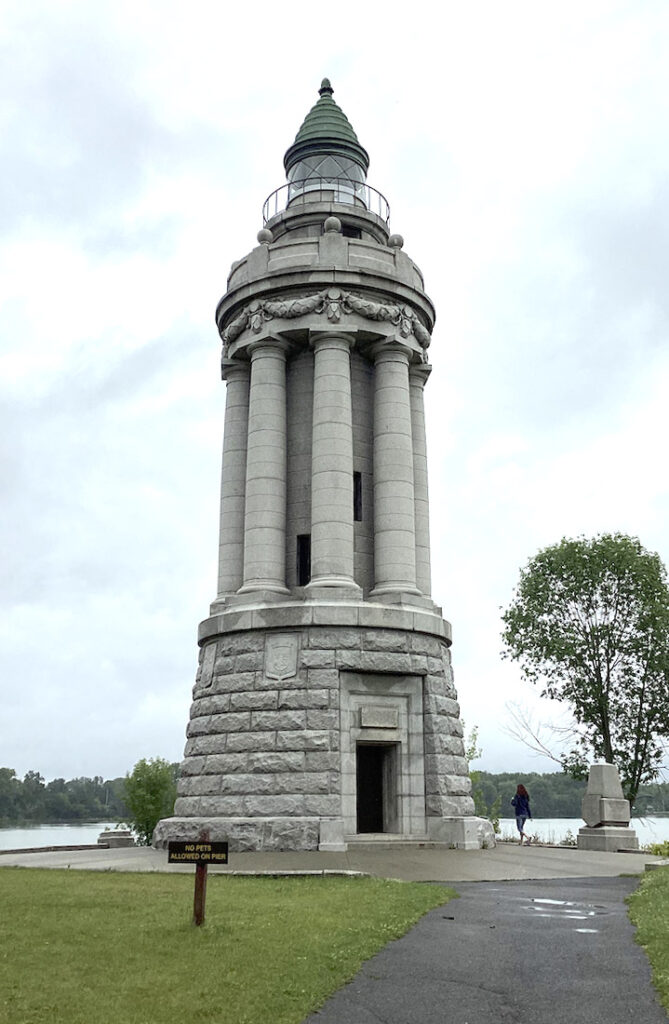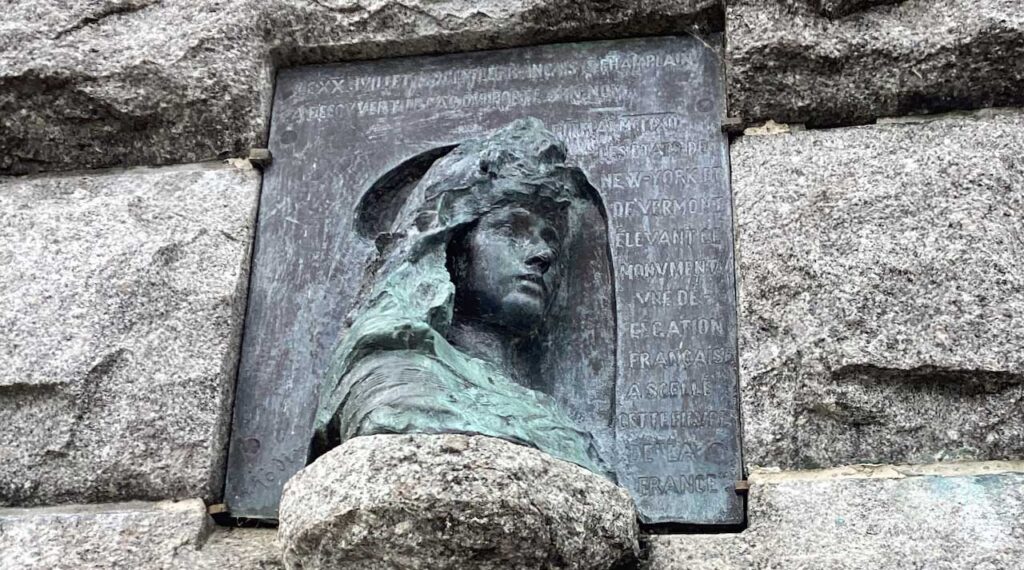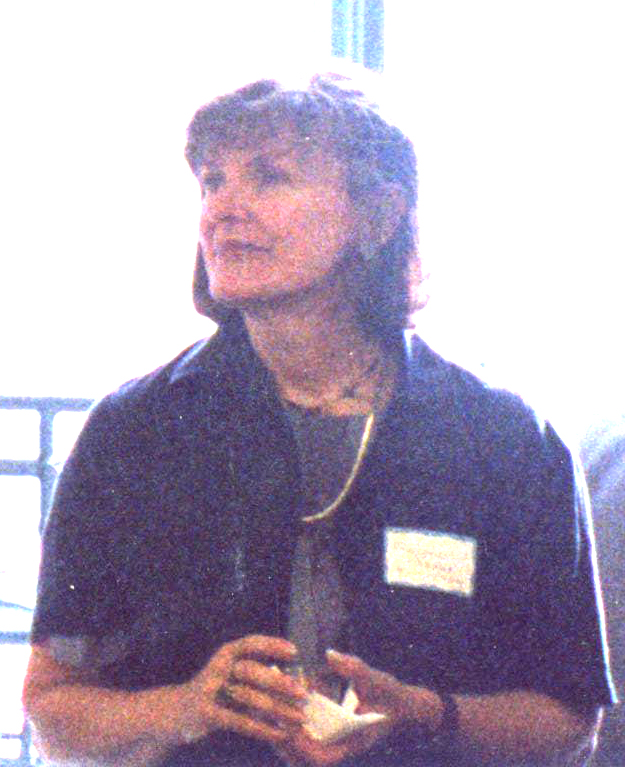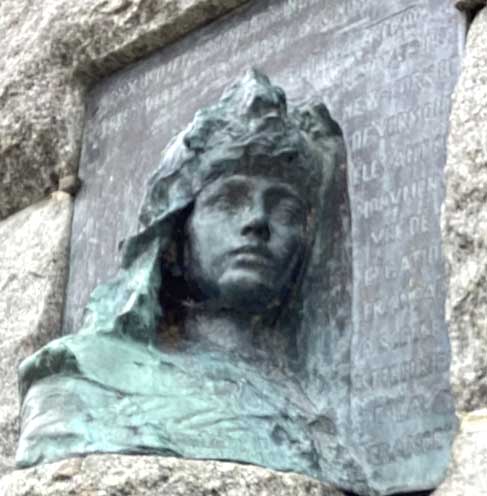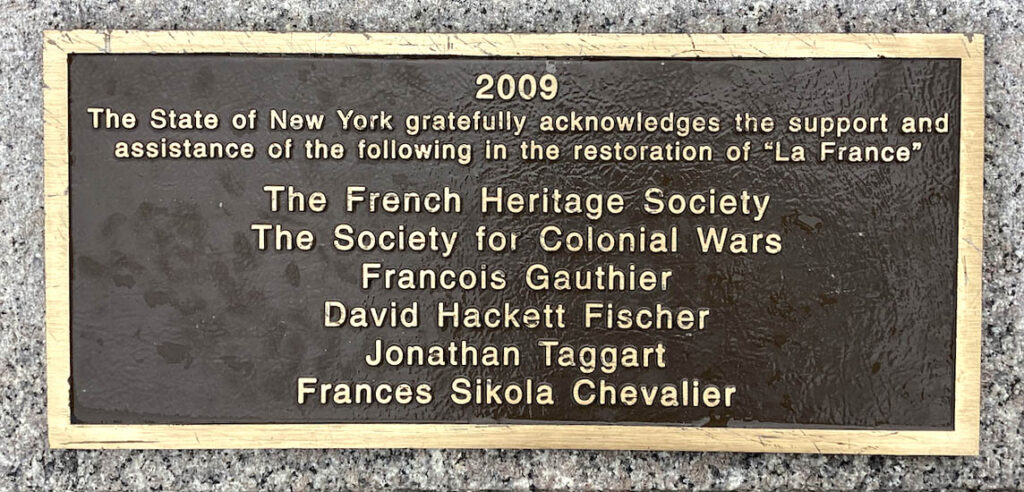Did you know that a campground on Lake Champlain is home to an outdoor sculpture created by the Auguste Rodin? And that for decades it was almost entirely forgotten until an intrepid researcher brought it to light?
The Champlain Tercentenary, 1909
The story begins in the year 1909, the Tercentenary of Samuel de Champlain’s exploration of the Lake Champlain region. To commemorate that 300th anniversary, New York State and Vermont collaborated to convert a 72-foot-tall granite lighthouse at Crown Point (aka Chimney Point), New York, into a memorial to the great explorer and navigator.
As a contribution to the memorial, the government of France donated to the people of Vermont and New York a bronze bas-relief called La France, to be embedded in the lighthouse’s exterior wall. It was created by Auguste Rodin, who sculpted the head of a woman to personify France. Camille Claudel, his muse and fellow sculptor, was his model.
The bas-relief was completed and installed, and the Champlain Lighthouse Memorial was dedicated in May 1912. At the dedication, Gabriel Hanotaux, a former French foreign minister, expressed his thanks to “the constructors of this magnificent monument” and went on in the flowery language of that era:
“This work of one of our greatest sculptors, Rodin, is of modest size, but it … will depict to you France, such as we Frenchmen conceive it, such as we love it. See this countenance, smiling and at the same time grave, these delicate and pure features, these full cheeks indicating health, this firm look expressing resolution and sincerity. It is France as she wishes to be and as she is.” And “to the friendships and smiles that are offered her [La France], she replies by a smile and a sincere and faithful friendship.”
A Century of Neglect
The bas-relief had great historical significance and artistic merit. But as the decades passed, it was all but forgotten. Indeed, the entire Champlain Memorial at Crown Point fell into neglect and disrepair. By 2004, the site had become a state campground, and the priceless Rodin bas-relief was hidden from sight by overgrown trees and abutted by RVs.
Enter Frances (Françoise) Chevalier. Born in France, Chevalier had came to the United States at age 12 and earned her Ph.D. in French language and literature at Rutgers in 1995. She became a professor of French studies at Norwich University (and would go on to chair Norwich’s department of modern languages for many years until her retirement). She had a particular interest in Camille Claudel. And in 1998 she joined the board of the AFLCR (then called the AFV-CQ).
In the 2006 a friend of Chevalier’s who knew of her interest in Claudel mentioned the sculpture’s existence to her. But where was it? The friend didn’t know. Chevalier went looking for it. “No one knew where she was,” the professor later recalled, in an interview with Seven Days. “I asked all around. I went to Lake Placid tourist center. They didn’t seem to know. No one seemed to know.” Finally she reached the lighthouse, “and there were all these RVs all around it. A friend who was with me said, ‘Oh, why don’t you check this out?’ I said, ‘No, it can’t be in there. They wouldn’t do that.’ Sure enough, there it was.”
The bas-relief was indeed still there—but unprotected, filthy, and neglected. Searching for funding to restore it, Chevalier brought it to the attention of François Gauthier, France’s consul-general in Boston. The Champlain Quadricentennial was approaching. Would the French government care to play a role in commemorating the 400th anniversary? she asked. It would, Gauthier said. The French government, joined by the French Heritage Society of Boston and the Society for Colonial Wars, funded the restorative cleaning of La France, while New York State undertook a $2 million restoration of the lighthouse memorial.
Rodin Restored
Workers unbolted the bronze plaque and took it to a facility of the New York State Office of Parks, Recreation and Historic Preservation. They found it coated with grime and deteriorated from exposure to the elements. They completed the conservation work, then applied a layer of wax to protect it from further wear.
On July 16, 2009, the Quadricentennial year, the sculpture was returned to its home on the lighthouse wall. It was remounted in its niche, and crews installed a security system to protect it.
Meanwhile Chevalier’s rediscovery of the bas-relief stunned the Rodin art world. Even the Rodin Museum in Paris had been unaware of it. And at the Rodin Museum in Philadelphia, which houses the largest Rodin collection outside Paris, officials were astonished. “It’s one of those things that fell off everyone’s radar,” Jennifer Thompson, of the Philadelphia Museum of Art, told the Rutland Herald.
As a result of Chevalier’s work, Vermont governor James Douglas appointed her to the Vermont Lake Champlain Quadricentennial Commission. She told the story of La France at the 2009 Champlain Quadricentennial Symposium. She gave talks elsewhere in Vermont and Boston about the region’s French heritage and the historical significance of the Champlain Lighthouse Memorial.
Traveling to France, Chevalier met with curators and archivists at the Rodin Museum. And much to her gratification, Reine-Marie Paris, author and grand-niece of Camille Claudel, and Philippe Cressent, editor of Camille Claudel retrouvée: Catalogue raisonné (2004), gave their support to her research and her project.
A Heritage Fading
In Chevalier’s view, the neglect of the Rodin bas-relief typified a general lack of appreciation for the French history of this part of the Lake Champlain region. Crown Point (which the French called Pointe à la chevelure) was the site of Fort St-Frédéric from 1737 to 1758; it and the area to the north were once part of New France. But the local schools and the community had little awareness of that history—most historical writing about Crown Point focused on the period of British control after 1758.
To Chevalier’s chagrin, the region’s the French background was all fading from historical memory: “The silence surrounding the Franco-American history of that state is striking. Vermont continues to historicize and market itself as primarily ‘Yankee’ (i.e., Anglo-Saxon Protestant), yet French/French-Canadian ancestry comprises the largest single ethnic group in Vermont. For years, Vermont Life Magazine and the Vermont Book of Days have propagated the image of Vermont as primarily Yankee. However, the Vermont Commissioner of Tourism and Marketing, Bruce Hyde, stated in 2009 at the time of the Champlain Quadricentennial that approximately forty percent of Vermonters have a French-heritage connection.”
Chevalier hoped the story of the renovated bas-relief would renew “awareness of the importance of French ancestry in the area,” and she hoped the site “could also become a focus for future, local French-heritage cultural events.” She called for further exploring “the legacy and contribution of the French, Franco-Canadians, Creoles, and other Francophone ethnicities to America’s rich and vibrant culture and history.”
Asked for her advice to the AFLCR’s current leadership and instructors, she told me: “Keep raising awareness of the Franco-Vermonter heritage and its connection with Quebec and the French-speaking world beyond, the benefits learning French and French culture, and how that heritage was suppressed. It is time to shine. Be visible! I would recommend initiating as many Quebec-Vermont exchanges as possible and to facilitate that by liaising with the Délégation du Québec in Boston in a strong way.”
In her own words
You can read Chevalier’s own account of the Rodin story in several articles.
“French-Heritage Resonance Sites and the Shaping of America: Opportunities for Service Learning and Advocacy.” Selected Proceedings of the 2010 AATF Convention (2010).
“The 400th Anniversary of Samuel de Champlain’s Exploration of Our Region: New Horizons for French-Heritage and French-Language Study.” Vermont Foreign Language Association Newsletter (April 2008): 8-10.
“The Many Faces of La France; Camille Claudel and France’s Gift at Crown Point.” In Nancy Nahra, ed., When the French Were Here. . . And They’re Still Here: Proceedings of the Champlain Quadricentennial Symposium.Burlington, VT: Champlain College and Queen City Press, 2010, pp. 207-28.
—Janet Biehl
